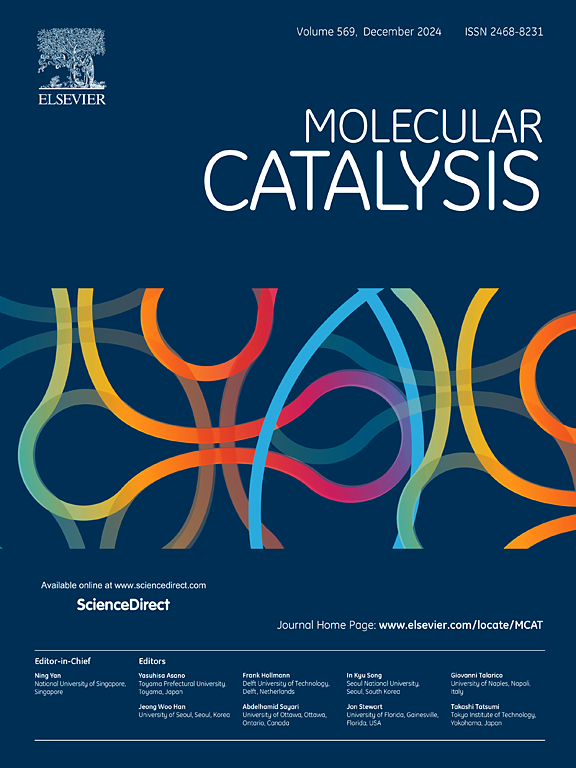Silica-supported Pt-In intermetallic alloy for low-temperature reverse water–gas shift reaction
IF 3.9
2区 化学
Q2 CHEMISTRY, PHYSICAL
引用次数: 0
Abstract
The reverse water–gas shift reaction (RWGS) has been regarded as an important route for CO2 utilization. Because the RWGS reaction is a mildly endothermic and competitive reaction with CO2 methanation, it is necessary to explore catalysts with high activity and selectivity at low reaction temperatures. Herein, we investigate the catalytic characteristic of silica-supported Pt-In alloy for RWGS reaction by comparing it with silica-supported Pt and In2O3-modified Pt. It is found that Pt-In/SiO2 exhibits significantly higher activity than Pt/SiO2 at reaction temperatures from 140 to 200 °C, and equivalent activities appear at 240 °C. Further raising the temperatures, the activity of Pt/SiO2 increases rapidly. CO selectivity over Pt-In/SiO2 is close to 100 % and higher than Pt/SiO2 (∼95 %) under dynamic reaction mode, being attributed to the effective expelling of CO away from the Pt-In surface by CO2 molecules and the decreased atomic hydrogen supply. Moreover, the formate and the redox pathways were followed over Pt-In/SiO2 and Pt/SiO2, respectively. Except for higher activity and selectivity to CO, In2O3-modified Pt exhibits the same catalytic pathways as Pt/SiO2. The present work supplied a guide to explore efficient catalysts for RWGS reaction at low reaction temperatures.

求助全文
约1分钟内获得全文
求助全文
来源期刊

Molecular Catalysis
Chemical Engineering-Process Chemistry and Technology
CiteScore
6.90
自引率
10.90%
发文量
700
审稿时长
40 days
期刊介绍:
Molecular Catalysis publishes full papers that are original, rigorous, and scholarly contributions examining the molecular and atomic aspects of catalytic activation and reaction mechanisms. The fields covered are:
Heterogeneous catalysis including immobilized molecular catalysts
Homogeneous catalysis including organocatalysis, organometallic catalysis and biocatalysis
Photo- and electrochemistry
Theoretical aspects of catalysis analyzed by computational methods
 求助内容:
求助内容: 应助结果提醒方式:
应助结果提醒方式:


